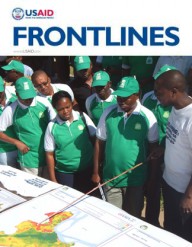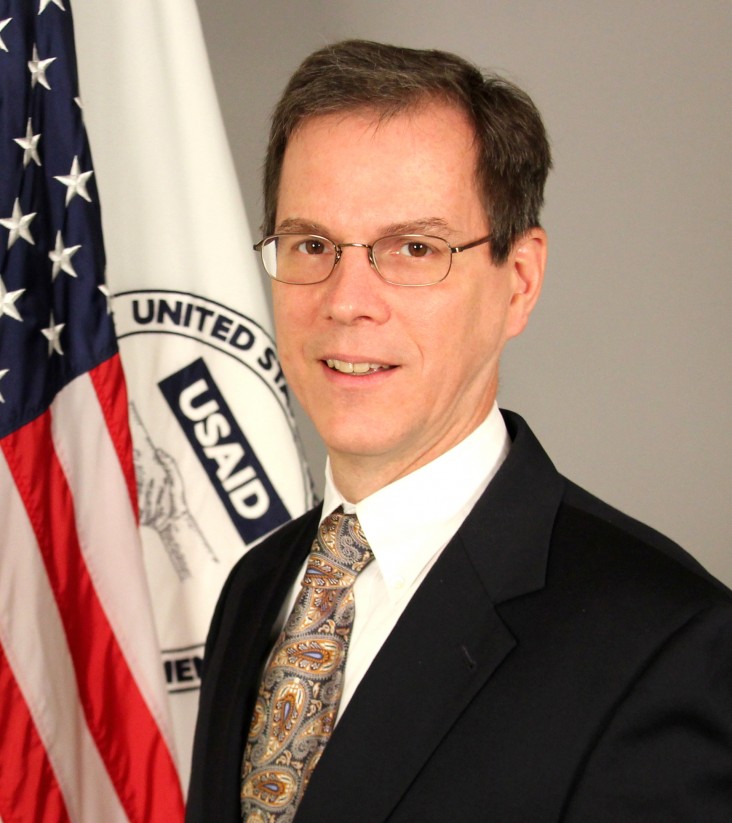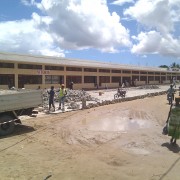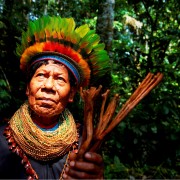Fifteen years from now, when today’s millennials become leaders of the global development community, they will look back and remember 2015 as the year we pledged to end poverty—and also as the year we got serious about climate action.
I believe 2015 will be remembered for both goals equally. Maybe because climate action became a prominent new issue among the Sustainable Development Goals agreed to in September. Or maybe because world leaders agreed to take a major step forward on climate action at an unusually tough round of climate negotiations in Paris in December 2015.
Or maybe 2015 will be remembered for climate action because of something much simpler: Because 2015 was the tipping point, the year it became obvious to everyone that weather extremes were getting far more unpredictable. It was the year we all realized that every one of the last 15 years ranked among the hottest on record, that climate impacts were happening, and that all our futures, whether rich or poor, depended on effective action.
I believe 2015 will also be remembered as the year we stopped debating, stopped wondering what we could do about climate change—and just started taking practical action. It’s a legacy I will be proud of.
The truth is, we started taking climate action long before 2015. This matters because it is the primary reason we are in a position to scale up that action today. When today’s millennials—tomorrow’s leaders—look back on 2015 as the year we kick-started climate action, it will be because of the groundwork laid over two decades by USAID, the Department of State, the Department of Energy, the World Bank, the U.K.’s DFID, Germany’s GIZ, Sweden's Sida and other global leaders.
At this moment, we are reminded that all human prosperity rests on environmental resources, including a stable climate. At USAID, we are reminded that our work to advance human prosperity and economic development may likewise depend on our climate action.
This FrontLines issue highlights just some of the programs that taught us that we can act on climate change—and how to do it effectively.
USAID plays a linchpin role in the U.S. Global Climate Change Initiative, connecting literally millions of people around the world with world-class expertise and support for climate adaptation, clean energy and sustainable landscape management. Increasingly, USAID is mainstreaming climate change across its development portfolio to safeguard advances in food and water security, disaster resilience and other development goals.
Weather-related disasters alone have cost the world on average more than 100,000 lives and $150 billion in losses in recent years. USAID is reaching more than 30 of our most vulnerable partner countries with knowledge and data to help better anticipate and prepare for disasters such as droughts, floods and storms, which are becoming less predictable, more intense and possibly more frequent with climate change. In Bangladesh, home to 160 million people, many of them poor, a joint USAID-NASA program called SERVIR is saving lives by sharing satellite data that adds three or more crucial days to early flood warnings to villagers in the Ganges and Brahmaputra floodplains.
But then there are the slower-moving threats. Crops and food supplies face growing risks from heat waves, droughts, shifting rain patterns and ocean acidification. In the Philippines, Haiti and elsewhere, USAID is training farmers in more sophisticated climate-smart agricultural techniques to help boost and maintain production and incomes in the face of changing conditions.
For many countries, loss of natural forests and landscapes is the biggest source of greenhouse gas emissions, not to mention a threat to some of the estimated 1.5 billion citizens who depend on forests for food or livelihood activities. USAID’s work on sustainable landscapes supports country partners like Mozambique and Nepal who are working to manage forests sustainably, protect livelihoods and slow and reverse land degradation to curb emissions.
Energy is, of course, as fundamental to development as food and water, and clean energy is an increasingly cost-competitive option. USAID clean energy work is extending access to affordable, reliable and sustainable energy in more than a dozen countries such as India, where technical experts are supporting government efforts to install 100,000 megawatts of new solar power capacity, vastly increasing supplies of low-cost, low-carbon electricity. In countries like Mexico, USAID is providing analysis and support to officials making climate and energy policy choices that will reduce dependence on fossil fuels, attract investment in clean energy and curb emissions.
Increasingly, the global development community recognizes that climate change will affect most development decisions today—not in some distant future. So, few were surprised when, in September of last year, President Barack Obama issued an executive order requiring federal agencies to integrate climate considerations across the U.S. international development portfolio. At USAID, a significant percentage of programs and strategies already do this, but the effort will be scaled up to ensure all development investments remain sound in the face of changing conditions.
In 2015, we know that facing climate risks and shifting to low-carbon development is probably a make-or-break element of our goal to end poverty and build lasting prosperity and resilience. That’s why USAID’s linchpin role includes engaging and preparing countries to shift to low-carbon growth. To date, we have forged special partnerships with 24 countries, representing 12 percent of global emissions, all committed to pursuing clean, low-emission development.
Our global partnerships to lower emissions are another achievement to remember when we look back on 2015. They have been years in the making and will bear fruit for decades to come.













Comment
Make a general inquiry or suggest an improvement.